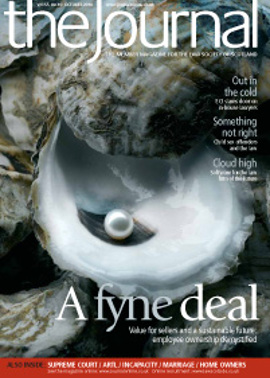D-Day for legal aid
With the judgment of the Supreme Court in HMA v Cadder and the announcement of the Chancellor’s UK Comprehensive Spending Review both due on 20 October, the autumn looks set be a critical month for legal aid practitioners.
The outcome of the spending review will give an indication of the level of cuts to public expenditure expected in Scotland. The review will help to determine the Budget Bill which will be placed before the Scottish Parliament in November. Cuts to legal aid spending are inevitable, and the challenge is to make them without damaging the core service that criminal and civil legal aid provides to communities across Scotland.
For civil work, the increases in numbers of cases over the last two years show that legal aid is needed most by citizens at a time when jobs are being lost, families placed under strain, and the country in a recession. For criminal work, the Cadder case has been a sharp reminder that our country needs to heed its obligations under the European Convention.
While there is no clear indication of the review’s outcome, the level of cuts required may be staggering. In England & Wales, Whitehall departments have been asked to model cuts of 25% and 40% and the Ministry of Justice believes that it can cut £500m from the budget for legal aid. Here, the Scottish Legal Aid Board has announced a review of funds spent on outlays, criminal and civil, and also a review of its own administration costs: these steps are welcome but are unlikely to provide all the savings required. Practitioners are encouraged to come up with proposals for change and the Society will look to engage closely with members on developments.
After Cadder
It would be premature to comment on the likely outcome in Cadder before the decision, although we are prepared for most contingencies.
Since the hearing at the Supreme Court in May, the Society has worked with Scottish Government, SLAB, Crown Office, ACPOS and others on a number of practical issues, such as ensuring that initial telephone consultations could be allowed, giving suspects the opportunity to make an informed decision on whether to seek advice from the solicitor in person at the police station. There has also been an improvement in rates agreed for work at anti-social hours. The Society has kept the profession informed on developments and we will look to provide the profession with full details on the judgment once released.
The profession has worked hard to make the provision of advice to detained suspects work in the short term and it is important that a sustainable system is developed in the longer term. We will be discussing the issues around cuts and Cadder at the Legal Aid Conference, in the Dunblane Hydro on 5 and 6 November, at which the Cabinet Secretary for Justice, Kenny MacAskill MSP, will be speaking.
Oliver Adair is the Society’s Legal Aid Convener
In this issue
- The Scottish Government's EU and International Law Branch
- Akzo-Nobel: what you need to know
- The Edinburgh Declaration
- The curtailment of criminal appeals to London
- Society, justice and the greater good
- "We've aye done it this way" – not now!
- A deal to buy in to
- Land Register: what next?
- Designed to appeal
- Perpetrator or victim?
- An orchestra of instruments
- Two by two, by two
- Added capacity
- D-Day for legal aid
- Law reform update
- Compliance and the consent regime
- From the Brussels office
- Paper, pixel and process
- Ask Ash
- Draft proof
- Time for a fresh look
- Where to draw the line
- Reviewing the review law
- Expensive business
- Taking the full impact
- No discrimination?
- Scottish Solicitors' Discipline Tribunal
- Website review
- Book reviews
- It's not good to talk
- Getting to know you






